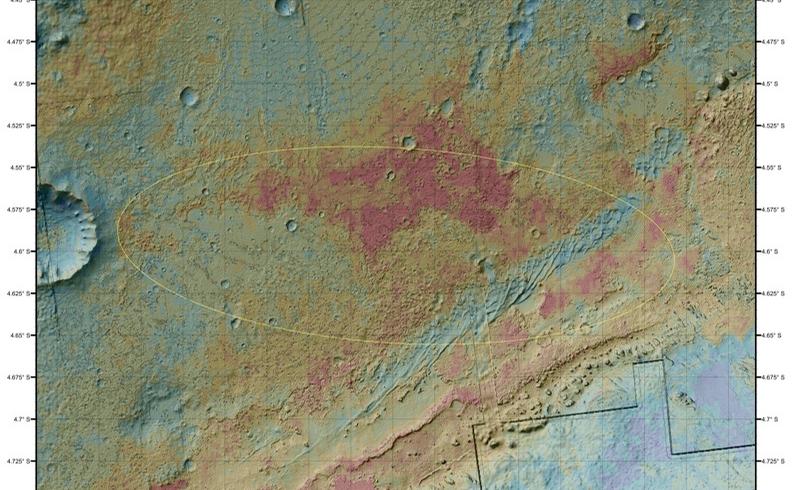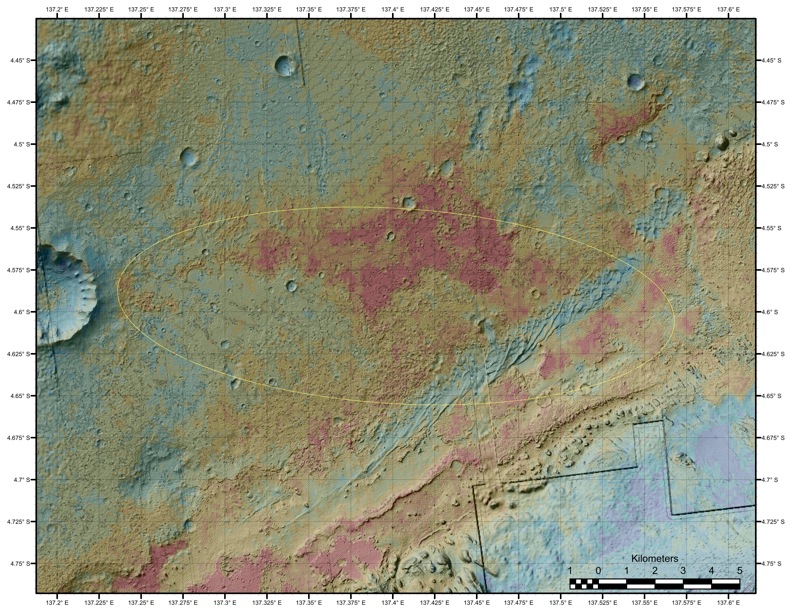Geological Diversity at Curiosity’s Landing Site

| Credit | NASA/JPL-Caltech |
|---|---|
| Language |
|
The area where NASA's Curiosity rover will land on Aug. 5 PDT (Aug. 6 EDT) has a geological diversity that scientists are eager to investigate, as seen in this false-color map based on data from NASA's Mars Odyssey orbiter. The image was obtained by Odyssey's Thermal Emission Imaging System. It merges topographical data with thermal inertia data that record the ability of the surface to hold onto heat.
The yellow oval shows the elliptical landing target for Curiosity's landing site.
An alluvial fan is visible around a crater to the northwest of the landing area. A series of undulating lines traveling southeast from the crater indicates similar material moving down a slope. The material, which appears bluish-green in this image, also forms a fan shape.
An area in red indicates a surface material that is more tightly cemented together than rocks around it and likely has a high concentration of minerals. An attractive interpretation for this texture is that water could have been present there some time in the past.
Curiosity is expected to land within the large Gale Crater. The rim of a smaller crater (about a half mile, or 1 kilometer, in diameter) inside of Gale is visible at the bottom right of the image.
NASA's Jet Propulsion Laboratory manages the 2001 Mars Odyssey mission for NASA's Science Mission Directorate, Washington, D.C. The Thermal Emission Imaging System (THEMIS) was developed by Arizona State University, Tempe, in collaboration with Raytheon Santa Barbara Remote Sensing. The THEMIS investigation is led by Dr. Philip Christensen at Arizona State University. Lockheed Martin Astronautics, Denver, is the prime contractor for the Odyssey project, and developed and built the orbiter. Mission operations are conducted jointly from Lockheed Martin and from JPL, a division of the California Institute of Technology in Pasadena.

